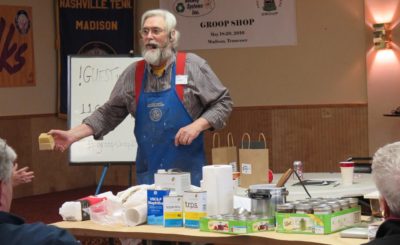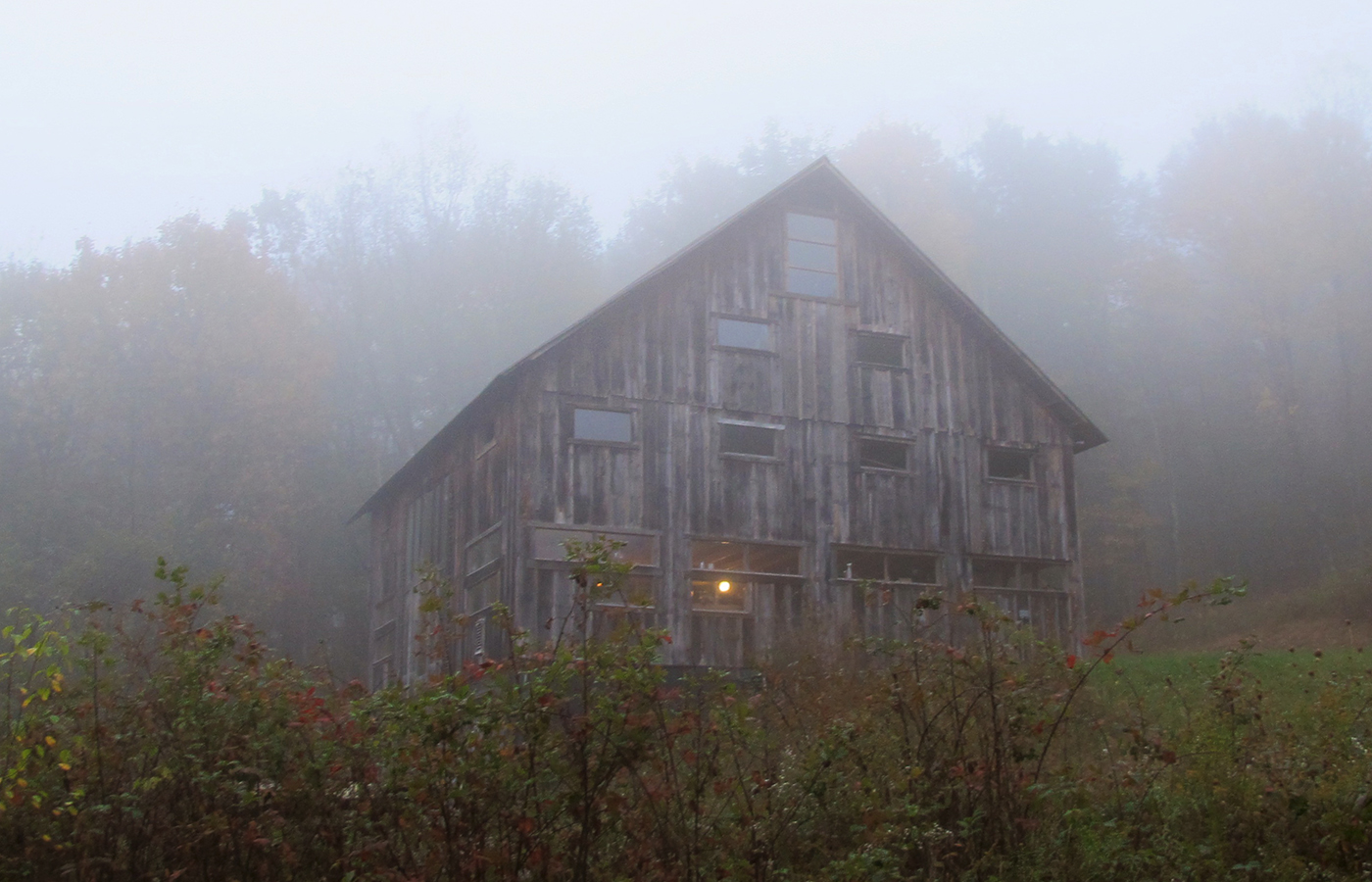Custom Blending Paste Wax in the Shop ( handout from Groopshop)
Here is a revised version of my handout at Groopshop.

==========================================
Custom Blending Paste Waxes in the Shop
Don Williams
Martin O’Brien in absentia
The fundamental thing about paste waxes is that they are a solution, consisting of a solvent (or solvent blend) into which is dissolved a solute (or blend of solutes). For the most part furniture relevant paste waxes are super concentrated solutions consisting of roughly 1/3 part wax or waxes to 2/3 part solvents like turpentine or naphtha. Sometimes other additives are included, these may be soluble in the solvent, such as low molecular weight acrylic resins or oil-soluble dyes, or suspensions like abrasives or pigments.
No single paste wax solution is satisfactory for all applications. Some require ease of use, some higher in-use performance, and these two are often mutually exclusive. We overcame this problem with the invention of “Mel’s Wax” emulsion, a stoopid-easy-to-use but premium high performance product while at the Smithsonian, but that is a subject for another time.
In order to keep the variables down to a mere multitude, for today’s exercises we will concoct recipes blending variations of the following components:
Waxes
Beeswax
Carnauba wax
Shellac wax
Microcrystalline 190 wax
Solvents
Turpentine
Naphtha
T.R.P.S.
Odorless mineral spirits
Additives
Dry earth pigments
Lithography pigments
Crayons for coloration
Rottenstone
Arkon P-90 acrylic resin
We will start with these basic recipes and head off down the rabbit trail from these points. We can mix them and then apply them to sample boards, and evaluate them tomorrow after they have flashed off and been buffed with linen, flannel, and bristle brushes. All recipes were prepared in heated containers warm enough to melt the waxes but not hot enough to risk burning them. I melt the wax first then add the solvent. My favorite set-up for melting is to use a fixed temperature (165 F) fondue hot plate and a Corning sauce pan.
It is important to remember two points. 1) if the paste wax is difficult to apply and distribute evenly over the surface, that is a solvent proportion issue. If there is not enough solvent, applying paste wax is nearly impossible. 2) if the dried wax film does not buff out well, or rubs off too easily, or has some other fault, that is a wax blend issue.
Recipe #1 – the old favorite soft paste wax, a bit smelly for my preference (turned out very nice to apply, performance was satisfactory)
2 parts beeswax
1 part naphtha
3 parts turpentine
Recipe #2 – a nice harder surface (very difficult to apply, nearly impossible to get an even distribution; solvent fraction was too low; another 2 or 3 parts of solvent would have made all the difference)
3 parts beeswax
1 part carnauba
2 parts naphtha
2 parts turpentine
Recipe #3 – a nice clean intermediate-to-hard surface that is less stinky than #2 (very difficult to apply, nearly impossible to get an even distribution; solvent fraction was too low; another 10 portions of solvent would be worth trying)
12 parts beeswax
4 parts shellac wax
12 parts naphtha
3 parts turpentine
Recipe #4 – slightly hard with a little “slickness” (very difficult to apply, nearly impossible to get an even distribution; solvent fraction was too low by at least 100%)
100 parts beeswax
10 parts carnauba wax
1 part acrylic resin beads
50 parts naphtha
30 parts turpentine
Recipe #5 – trying to split the difference (applied pretty well but another 2 or 3 parts of naphtha would have been perfect, performance was excellent)
5 parts beeswax
1 part microcrystalline 190
7 parts naphtha
Recipe #6 – trying for better performance (applied pretty well but another 2 or 3 parts of naphtha would have been perfect, performance was excellent)
5 parts beeswax
1 part shellac wax
1 part microcrystalline 190
7 parts naphtha
Recipe #7 – MartinO’s favorite (applies and performs beautifully)
1 part beeswax
2 parts odorless mineral spirits
Recipe #8 – harder but more difficult to buff out, otherwise excellent performance
115 grams beeswax
15 grams shellac wax
15 grams carnauba wax
2 grams Arkon P-90 acrylic beads
250 grams t.r.p.s solvent
(Bonus) Recipe #9 – so darned nice I might start manufacturing this one. Really. This was sold at Mike’s Mostly Honest Auction and I am awaiting feedback from the buyer before proceeding.
115 grams beeswax
8 grams shellac wax
8 grams carnauba wax
1 gram Arkon P-90 acrylic beads
250 grams naphtha solvent



I am looking for a wax blend that will adhere to
an amaryllis bulb. Plain paraffin works but since
It’s not very thick when melted, I have
To dip it several times to get a good layer.
Wondering if I could add something to that to make
It creamier/thicker so I only have to dip it once.
Or possibly use a different wax altogether.
I did try candle wax from a craft store but I didn’t
Notice much difference. Any guidance
would be appreciated.
Thank you,
Brenda